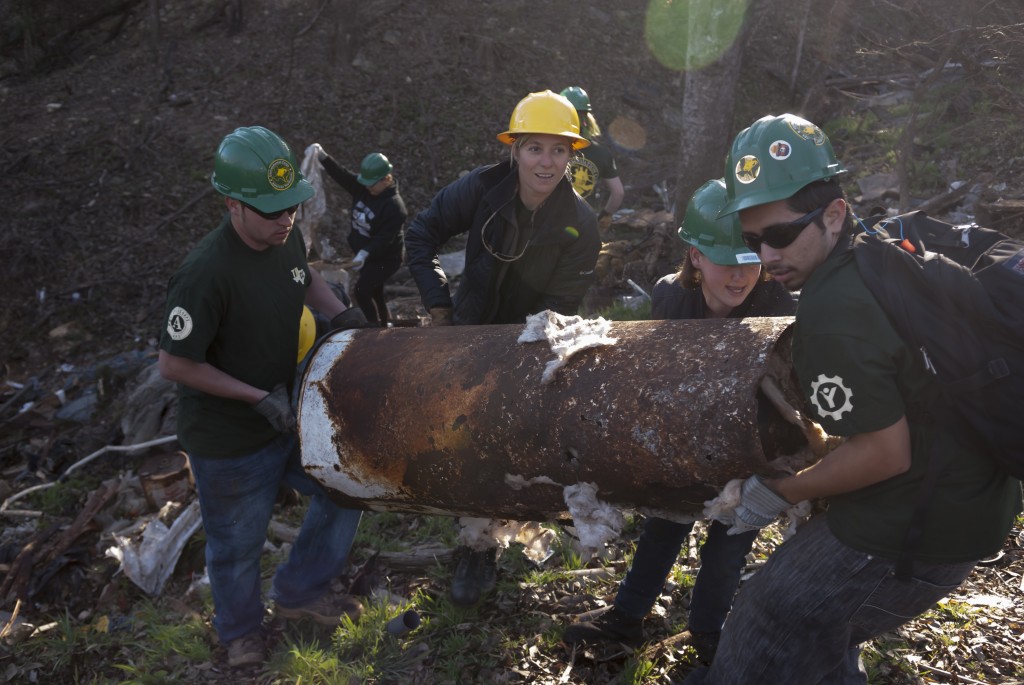
Texas Conservation Corps providing disaster relief at Gulf Coast as part of 21st Century Conservation Service Corps
As a recent crew of young people pushed through a riparian forest at the Trinity River National Wildlife Refuge removing Chinese Tallow and other invasive species, they also stood ready to respond to disaster. Their team, part of a total of 50 Corps members from the Texas Conservation Corps who have signed up for a year of national service in the fields of conservation and disaster response, are trained and ready to be deployed across the region with limited notice.
This past winter, Corps members spent over one month training in disaster response and conservation skills. When the next disaster strikes the teams are ready within 24 hours to integrate into the existing structure of an emergency operation’s Incident Command System. The team’s disaster response skills include hazardous debris removal, home repair and shelter management with a specialization in volunteer management. Their conservation work often has an emergency management aspect as well, with hazard fuel mitigation projects protecting communities from wildfire and habitat restoration work that increases the ability of local ecosystems to withstand natural disasters.
In 2013, working in the aftermath of the fertilizer plant explosion in West, Texas, Texas Conservation Corps members managed over 23,000 volunteer hours of direct assistance to that community. This season, corps members are currently working on habitat restoration and hazard fuel management projects up and down the Gulf Coast including Attwater Prairie Chicken National Wildlife Refuge, Gulf Islands National Seashore, Big Thicket National Preserve, Palo Alto Battlefield National Historical Park, Texas’ Goose Island State Park and others. The members also stand ready to assist emergency management partners including FEMA, the Disaster Services Unit of the Corporation for National and Community Service, Texas Voluntary Organizations Active in Disaster (VOAD) and Texas’ Division of Emergency Management.
Ricky Reedy, an AmeriCorps crew leader for one of Texas Conservation Corps’ Emergency Response Teams, is part of this year-long experience to gain practical leadership skills while serving the needs of his country. “We’re the legacy of what was built in the 1930’s with the Civilian Conservation Corps,” Ricky said. “The whole experience that the Corps offers drew me in and it’s very motivating to understand that a community is going to be challenged by a disaster and that we’ll be a big part of their first wave of support.”
-Submitted by Texas Conservation Corps
